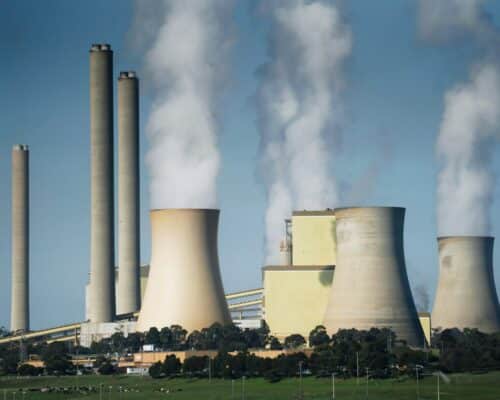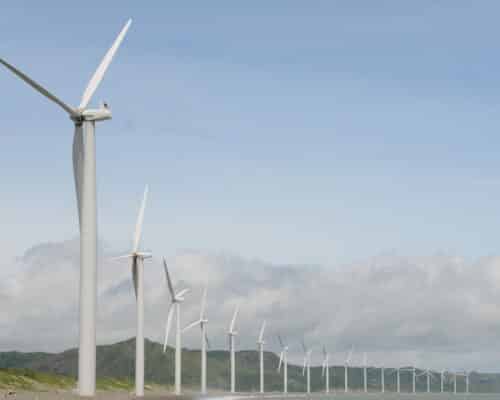Top 7 Green Technology Examples in 2024
09 June 2024 – by Eric Koons Comments (0)
Green technology offers several great solutions for climate change mitigation. Yet, as the world fights to implement these green technologies, the rising population, energy and dietary needs of the developing world seem to eat away the progress.
With COVID-19 being responsible for the only significant reduction in carbon dioxide emissions in recent decades, it may be time to revise where governments apply green technology subsidies.
What is Green Technology – Definition?
Green technology, also known as environmental technology, clean technology or sustainable technology, is a term used to describe environmentally friendly technology. This includes technology that reduces the amount of energy used, technology that recycles materials, and technology that does not produce harmful emissions.
What Are the Benefits of Green Tech?
Green technology, also known as eco-friendly technology, not only reduces carbon emissions but also promotes sustainable practices within industries. The use of green technology products such as smart home devices and energy-efficient appliances not only lowers electricity bills but also minimizes the overall carbon footprint of households.
With the increasing complexity of decarbonisation, it is important to understand the pros and cons of the available technologies.
Top 7 Green Technology Examples in 2024:
These are the top examples of green technology in 2024.
1. Solar Panels
Solar panels are cheap, scalable and adjustable to different surfaces and needs. As a result, they will likely be a leading renewable energy technology in the world’s future energy mix. With monocrystalline, polycrystalline, thin-film and perovskite cells (still in the research phase) as well as solar shingles and tiles to choose from, the options seem limitless.
Additionally, options like floating solar panels and solar PV panels seem to be the best solution for rising energy consumption. The only issue is heavy but very predictable intermittency.
2. Wind Turbines
Wind turbines and solar panels have broken the lowest price threshold that coal power plants have long held. Since intermittency is a central concern, more solutions are appearing. Low-wind speed wind turbines, vertical-axis wind turbine, urban wind turbines and integrated chimney-type wind turbines are all set to take over a significant portion of the renewable electricity production market in the upcoming decades. Solar power and wind power are the best ways to use natural resources instead of fossil fuels to produce electricity.
3. Green Energy Storage Technology
Green energy intermittency is the biggest issue at hand. As energy storage is expensive and not very efficient, even storing 30 kWh for an average US home’s daily use can be very costly. However, there are many solutions under development. The future energy storage cross-section will most likely consist of:
- li-ion batteries,
- zinc-bromide gel batteries,
- solid-state batteries,
- reversible hydro dams
- and smart-grid energy use optimization solutions.
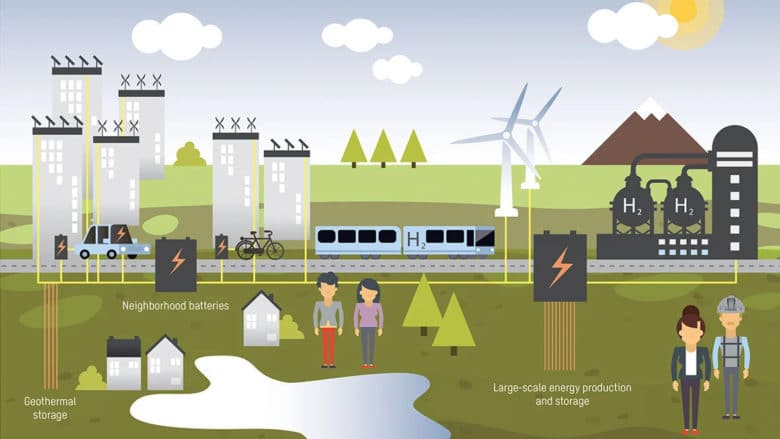
4. Electric Vehicles
Electric vehicles are an essential part of the green technology future. They are powered by electricity, so there are no direct carbon emissions.
However, on the other side of the EV equation are energy producers. EVs still create indirect emissions if the electricity comes from coal or natural gas. Additionally, issues associated with an increased load on the grid pose a different set of concerns that demands significant investments in grid modernisation. One way to combat this is by combining electric vehicles with residential solar panels. Still, zero emissions make EVs a better option.
5. Natural Gas
Natural gas emits almost 50% less carbon than burning coal. This makes it one of the preferred energy sources for electricity production, heating and cooling and home cooking. However, as emissions still exist, it should only be used as a transition solution for a temporary reduction in emissions. For example, Singapore heavily relies on natural gas for electricity production but plans to phase it out in the coming decades slowly.
6. Renewable Biomass Energy
Renewable biomass energy is a heavily criticised field of renewable energy generation. Deforestation to make wood pellets and converting arable land into a biomass resource raises concerns about the process’ long-term feasibility. However, sourcing biomass from annuals or fast-to-grow plants provides a different carbon profile for the prospective field of energy generation.
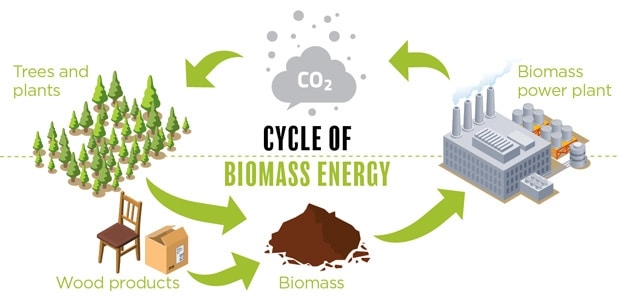
7. Carbon Capture, Utilisation and Storage
Carbon capture, utilisation and storage (CCUS) is a technology that shows a lot of promise but has yet to be proven at a large scale, especially without government subsidies. As the technology directly removes carbon from the atmosphere, it cuts the problem of global warming at the root.
However, it is a water and energy-intensive solution, making it costly and impractical in the developing world. Issues such as carbon utilisation (to make it more economically viable) and enhanced oil recovery (EOR) make the industry dirtier than it should be.
Some other examples of green tech solutions include tidal energy, vertical farming, self-sufficient buildings and natural treatment systems for waste management.
Existing Green Technologies for Reducing Carbon Dioxide and Greenhouse Gas Emissions
As all technologies have both their advantages and disadvantages, it remains unclear which ones governments will rely on to reach their ambitious goals. As green technologies continue to develop, we expect efficiency to increase and costs to decline.
In the meantime, combining green technology solutions and strategies to decrease energy demand seems to offer the highest likelihood of long-term carbon reductions. Several possible ways to reduce energy demand include:
- vertical farming,
- no-till farming,
- changing dietary habits,
- solar collectors
- and municipal wastewater heat recovery.
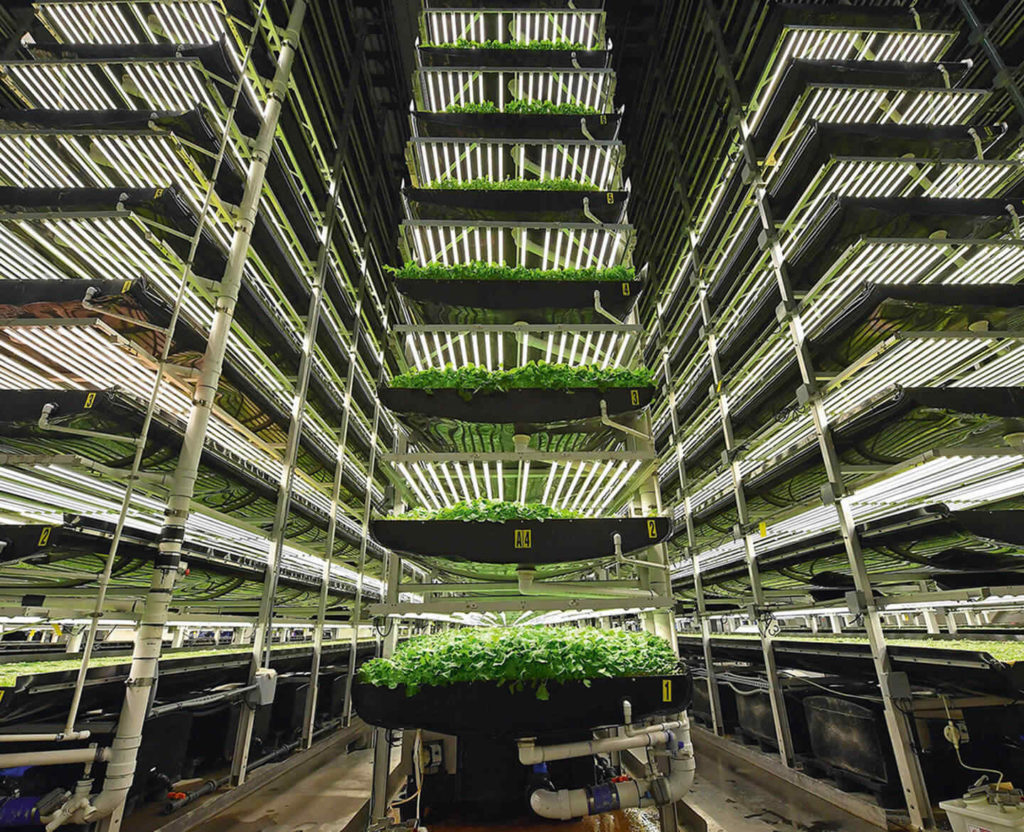
Combining Green Tech and Lower Demand – Future
Climate change’s consequences will burden the developing world despite not being responsible for most emissions. Meanwhile, the region is the least ready to implement renewable energy technologies.
It will largely fall on the developed world to help support these countries and implement large-scale renewable energy systems. However, developing countries still have an important role in applying nature-based solutions (like protecting natural green spaces) and slowing the growth of their energy demand. Adopting energy efficiency is the best option.
In this way, the world needs to work together to limit climate change through eco-friendly technology, which the IPCC states will require “rapid, far-reaching and unprecedented changes in all aspects of society.”

by Eric Koons
Eric is a passionate environmental advocate that believes renewable energy is a key piece in meeting the world’s growing energy demands. He received an environmental science degree from the University of California and has worked to promote environmentally and socially sustainable practices since. Eric’s expertise extends across the environmental field, yet he maintains a strong focus on renewable energy. His work has been featured by leading environmental organizations, such as World Resources Institute and Hitachi ABB Power Grids.
Read more



